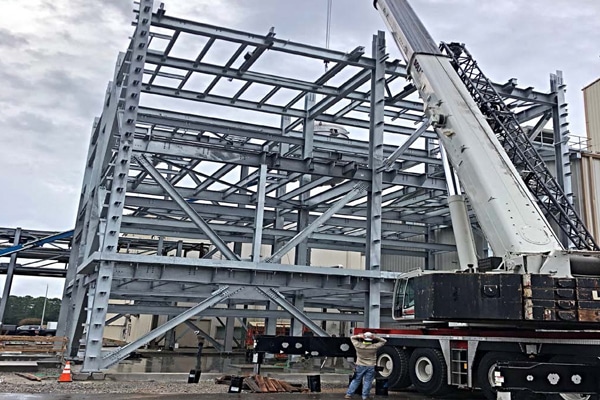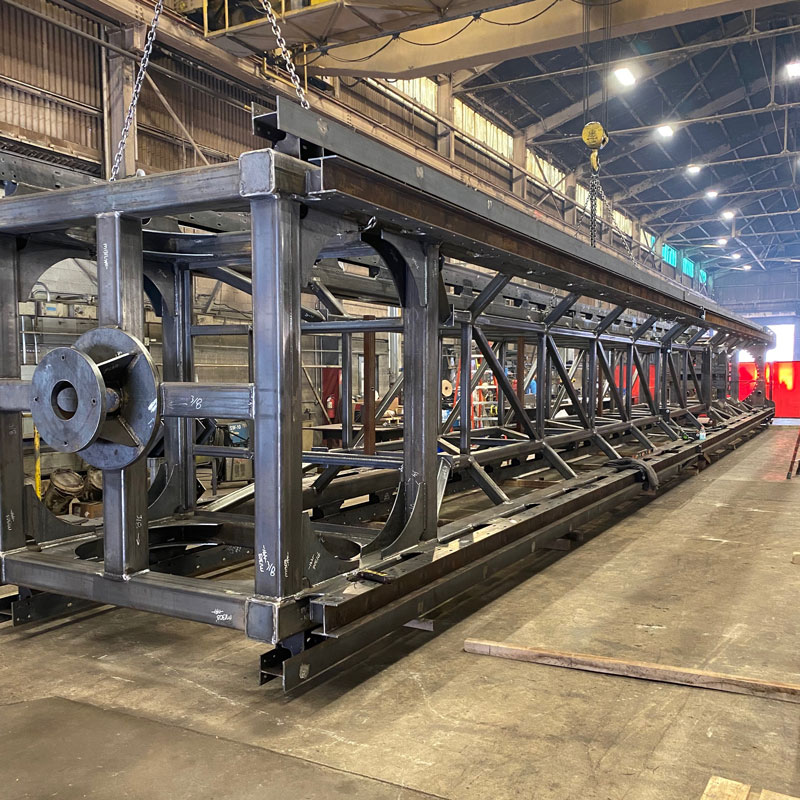Cutting-Edge Metal Fabrication Melbourne: Custom Solutions for Every Task
Cutting-Edge Metal Fabrication Melbourne: Custom Solutions for Every Task
Blog Article
Comprehensive Analysis of Cutting-Edge Techniques in Steel Fabrication Industry
As the steel fabrication market remains to evolve, the combination of innovative strategies has actually ended up being important for remaining competitive and satisfying the needs of contemporary production standards. From laser reducing advancements to the use of robotics and 3D printing in steel production, the landscape of construction strategies is rapidly altering. With each innovation bringing its very own collection of obstacles and advantages, an extensive evaluation of these techniques is vital for firms aiming to improve their procedures, boost accuracy, and ultimately, boost the quality of their steel fabrication outcome. In this dynamic market where modern technology plays a pivotal role, recognizing the subtleties of these cutting-edge techniques is not just an option but a requirement for those aiming to forge ahead in the ever-evolving world of steel fabrication.
Laser Reducing Advancements
In the world of steel construction, laser cutting advancements have actually reinvented the precision and effectiveness of metal shaping procedures. By taking advantage of the power of concentrated laser beams, suppliers can now achieve unrivaled levels of precision when cutting via different types of steels. This technology enables complex designs to be implemented with very little product waste, making it an affordable remedy for markets requiring high accuracy components.
Among the key benefits of laser cutting is its capacity to deal with a wide variety of materials, including stainless-steel, aluminum, and carbon steel, with convenience. The process creates clean, burr-free sides, removing the requirement for added finishing steps. The non-contact nature of laser cutting reduces the risk of product contamination, resulting in greater quality end items.
Furthermore, laser reducing equipments can be programmed to make swift, accurate cuts, dramatically decreasing manufacturing time contrasted to typical reducing methods. This speed and accuracy make laser cutting specifically appropriate for mass production environments where effectiveness is vital. As modern technology remains to breakthrough, laser cutting is poised to play a progressively crucial function in the steel construction market.

CNC Machining Innovations
The evolution of CNC machining modern technologies has actually ushered in a brand-new period of precision and efficiency in the steel construction sector. Computer Numerical Control (CNC) makers have actually changed steel construction by supplying unmatched precision and repeatability in the manufacturing process. Alpha reo. Among the key technologies in CNC machining is the combination of advanced software program systems that enable real-time surveillance and adjustments, resulting in boosted productivity and top quality control
Furthermore, the growth of multi-axis CNC devices has actually enabled the construction of complicated steel parts with elaborate styles that were formerly challenging to create. These equipments can perform a wide variety of machining operations, including milling, boring, transforming, and grinding, all with high degrees of accuracy.
In addition, the incorporation of automation and robotics in CNC machining has streamlined manufacturing procedures, minimized lead times, and reduced the margin of error. This combination of sophisticated technologies not only increases effectiveness however additionally makes certain consistent quality across all fabricated steel parts. Finally, CNC machining advancements remain to drive improvements in the steel manufacture sector, establishing brand-new requirements for accuracy and efficiency.
Automated Welding Technologies
Automated welding technologies have transformed the steel construction industry, enhancing efficiency and precision in the welding procedure. These sophisticated innovations use computer-controlled systems to automate the welding process, bring about greater efficiency levels and improved weld quality. Among the essential benefits of automated welding is the ability to execute intricate welds with constant accuracy, reducing the chance of mistakes and rework.
Robot welding systems are at the forefront of automated welding technologies, supplying unmatched speed and precision. These systems can deal with a wide variety of welding jobs, from easy to intricate, effortlessly (steel fabrication melbourne). By utilizing innovative sensors and software program, robotic welders can adapt to variants in product and joint geometry, guaranteeing an uniform and dependable weld
Moreover, automated welding innovations boost office security by lessening the direct exposure of human welders to unsafe fumes and extreme warm. As the steel fabrication sector continues to advance, incorporating automated welding modern technologies will be crucial for companies seeking to remain competitive and fulfill the growing demands for high-grade welded items.
Robotics Assimilation in Fabrication
Making use of robotic systems in construction procedures has become an essential approach for boosting efficiency and precision in contemporary production settings. Robotics integration in steel fabrication provides a myriad of advantages, consisting of raised efficiency, boosted top quality control, and enhanced safety steps. These sophisticated robot systems are furnished with innovative sensors and programming abilities, enabling them to carry out complex tasks with a high degree of accuracy and repeatability.
One of the crucial benefits of robotics assimilation in steel manufacture is the capacity to automate repeated tasks, such as material handling, cutting, welding, and assembly processes. This not only accelerates production cycles but also reduces the threat of human mistake, causing greater total item high quality. Additionally, robots can run 24/7, dramatically enhancing manufacturing result and conference tight project target dates.

3D Printing in Steel Production
Having anchor actually reinvented the steel manufacture industry with robotics combination, the expanding exploration of 3D printing in steel manufacturing is poised to additional breakthrough the realm of contemporary production strategies. 3D printing, additionally referred to as additive manufacturing, provides unmatched layout liberty and complexity, allowing the production of elaborate steel structures that were previously unattainable through traditional manufacturing methods. By utilizing computer-aided style (CAD) software program, suppliers can specifically regulate the layer-by-layer deposition of steel product, causing get rid of improved geometries and performances.
One of the vital advantages of 3D printing in steel manufacturing is its ability to minimize product waste dramatically. Unlike subtractive manufacturing processes where excess product is trimmed away, 3D printing only uses the necessary amount of steel needed for the last component. This performance not only causes cost financial savings but also lines up with sustainable production practices by reducing environmental influence.
Furthermore, 3D printing makes it possible for rapid prototyping and customization, permitting for the production of small sets of complex steel elements with short preparations. As the innovation continues to mature and come to be extra available, its assimilation right into mainstream steel fabrication processes is anticipated to drive technology and effectiveness across the industry.
Conclusion
Finally, the steel fabrication industry has seen considerable developments in techniques such as laser news cutting, CNC machining, automated welding, robotics integration, and 3D printing. These advanced innovations have actually reinvented the means steel items are manufactured, leading to enhanced accuracy, performance, and cost-effectiveness. Proceeded investment in these ingenious methods is essential for the industry to stay affordable and meet the needs of modern-day production processes.
As the steel fabrication sector continues to progress, the combination of advanced methods has actually come to be necessary for staying affordable and meeting the demands of modern production requirements.One of the essential advantages of laser cutting is its ability to take care of a broad variety of materials, including stainless steel, light weight aluminum, and carbon steel, with simplicity.Automated welding modern technologies have reinvented the steel construction industry, enhancing effectiveness and accuracy in the welding procedure.Having actually transformed the steel manufacture industry through robotics integration, the blossoming exploration of 3D printing in steel manufacturing is poised to more advancement the world of contemporary manufacturing methods.In verdict, the steel manufacture market has seen substantial improvements in strategies such as laser cutting, CNC machining, automated welding, robotics combination, and 3D printing.
Report this page